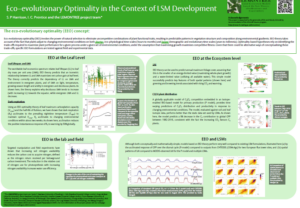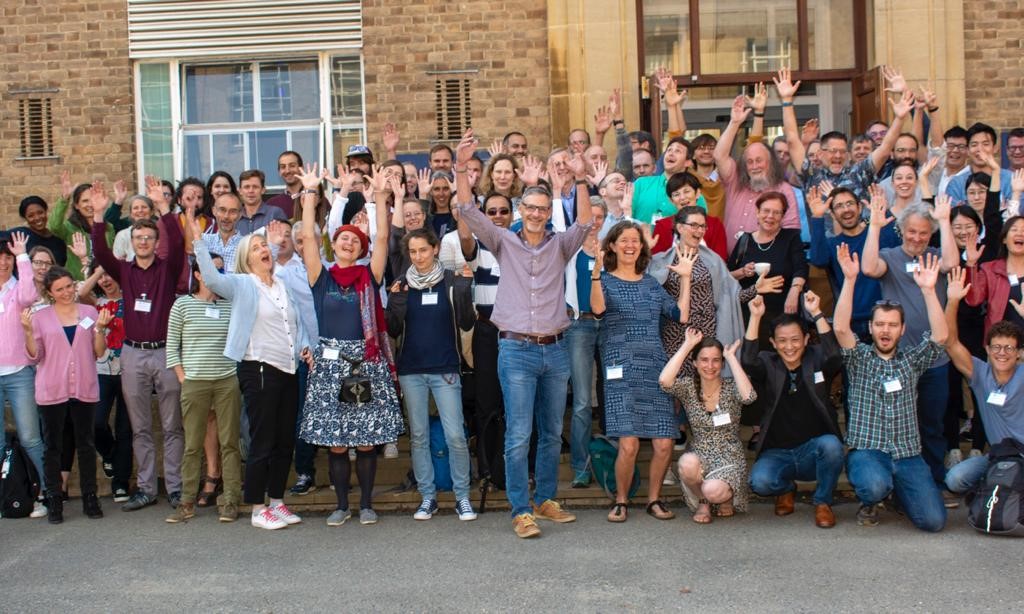From the 12th to the 15th of September, Colin Prentice and Sandy Harrison attended the Land Surface Modelling Summit at the School of Geography and the Environment, University of Oxford. This four-day workshop brought together representatives of the major land surface modelling groups in North America, Europe, Japan and Australia to discuss issues facing the community and to develop a roadmap for future developments.

After a welcome and introduction from Dr David Lawrence (National Center for Atmospheric Research) and Dr Eleanor Blyth (UK Centre for Ecology and Hydrology), the focus shifted to the four requirements for the future:
- Ecosystem resilience to climate change
- Ecosystem services (food, fuel, fibre) and human management of the land and water
- Net Zero Plus- how to quantify this
- Hazard prediction
Eco Evolutionary Optimality
On Monday afternoon, Colin gave a talk titled “How well-tested eco-evolutionary optimality hypotheses can make land-surface models more reliable and robust”. Sandy also presented a poster at the summit called “Eco-evolutionary optimality in the context of LSM development”.

LEMONTREE and the LEMONTREE approach of using eco-evolutionary optimality theory to simplify model treatments and minimise the number of parameters has a lot to offer to the LS community. Whilst EEO wasn’t a key focus of the talks, it garnered a lot of interest in the coffee break discussions since the concept of EEO is a novel approach not previously considered by most LSM developers. It is not an approach that all were convinced by, but the LEMONTREE team hope to supply unambiguous evidence to convert the non-believers! Sadly, EEO wasn’t a topic discussed as part of the roadmap, but hopefully, many of the participants will now think about how to incorporate the EEO approach into their models.
Expectations on the LS community
During the roadmap planning discussions thoughts turned to new processes we would need to include to supply projections of diverse aspects of the services provided by the land. The LS community is expected to supply information about future climate change impacts and is being put under increasing pressure to simulate multiple aspects of the land system, from biodiversity to groundwater hydrology. For example, soon, the LS community will be expected to comment on afforestation, and plans of where to plant trees so that they will not only thrive but also have the greatest impact on mitigating climate change.
The problem is that the models we have are not fit for purpose, are highly tuned for modern conditions, and still give divergent results when run into the future for even basic properties like gross primary production. These are big aims but sadly, there was no collective agreement on a workable roadmap to achieve this challenge.
“My feeling is that the community is being asked to run before it can walk – we need to do a lot more science to develop better and more robust models before we can be confident about predicting climate impacts reliably.” Sandy
Model requirements
Other key issues that arose during the week were the need for point data (especially flux, trait and agriculture experiment point data), the importance of benchmarking, the need for sharing expertise and interoperability of model components and the role of machine learning in improving models. To achieve this, we will need extensive collaboration between partners that already hold various databases. However, it was felt substantial funding is needed if we are to develop international capacity in land-surface modelling.
“Collectively, there didn’t seem to be an idea how we solve these challenges other than to throw a lot of money at it, but that won’t solve the problem, in my opinion” Colin
LEMONTREE also has a lot to offer in terms of benchmarking and model evaluation. We have already compiled data sets, both at site level and global products, that could be incorporated into the current evaluation tools of choice, iLAMB, PLUMMER2 and Modelevaluation.org. We have started the conversation and will be working with the key people on this in the next couple of years.
Overall, it was an interesting week of hearing progress from across the globe in land surface modelling, however, the focus now needs to shift to how to tackle the great ecosystem-wide challenges that we face. The summit has highlighted that we have a long way to go yet and no clear roadmap for how to get there.

“The LSMS may have been a bit of a disappointment because of the programmatic emphasis and the lack of a clear vision about the science, but it was great to be back at Teddy Hall – particularly when I didn’t have to stay up half the night to make sure the rugby team were behaving themselves.” Sandy

